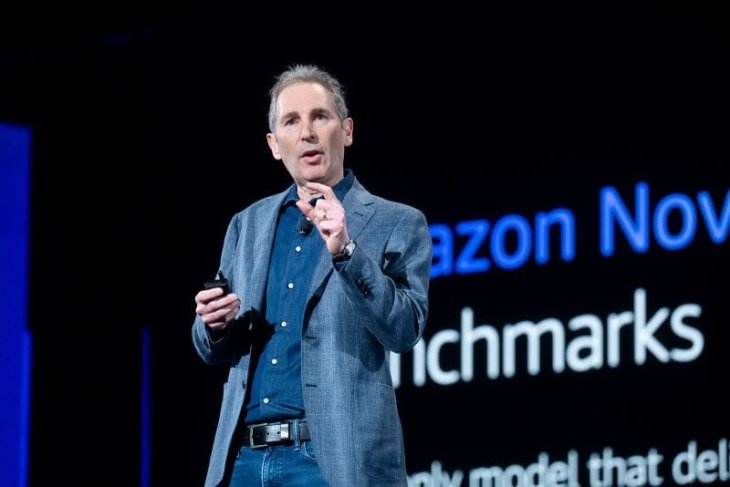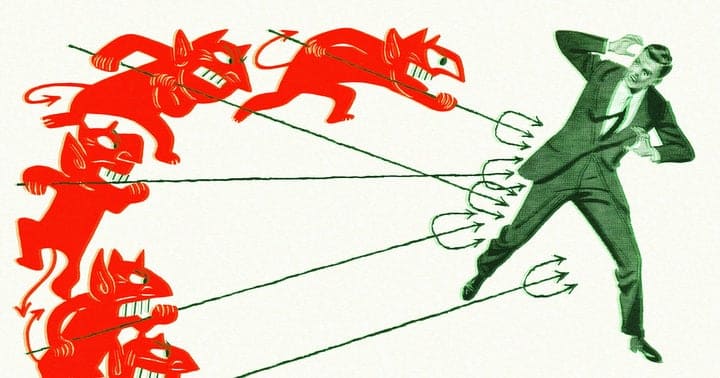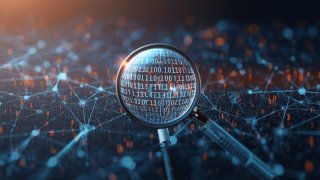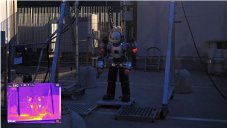AI Intimidation Tactics: CEOs Turn Flawed Technology Into Employee Fear Machine
Karamchand - Jun 25, 2025

Despite being error-prone and handling only simple tasks, AI chatbots have become CEOs' favorite psychological weapon for intimidating employees across corporate America.
- David vs. Goliath 2.0: How DeepL's NVIDIA SuperPOD Makes Google Translate Look Like Dial-Up Internet
- The Great AI Suitcase Caper: How China Pulled Off Tech's Most Audacious Smuggling Operation
- The Ultimate Tech Betrayal: OpenAI's Nuclear Revenge Plot Against Sugar Daddy Microsoft
Despite remaining error-prone and handling only basic tasks, AI chatbots have become CEOs' preferred psychological weapon for employee intimidation. Furthermore, this troubling trend transforms artificial intelligence into a corporate control mechanism rather than productivity enhancement.

The Paradox of Imperfect AI Power
In today's business world, artificial intelligence dominates corporate buzzwords. However, a disturbing phenomenon quietly unfolds in luxury offices worldwide. CEOs no longer simply deploy AI to improve work efficiency - instead, they weaponize this technology for psychological control and workforce intimidation.
The first paradox lies in current AI technology's fundamental nature. Despite being wrapped in fancy, glamorous terminology, today's AI essentially consists of large language models or predictive chatbots with "catchy names." Currently, AI remains too limited to deliver the workplace revolution many fear.
Nevertheless, business leaders quickly realized that AI fear itself packs as much punch as the actual technology.
Corporate Threats Disguised as Innovation
Amazon CEO Andy Jassy boldly declared AI's ability to "reduce the company's total workforce." Meanwhile, JPMorgan executives bluntly told investors that artificial intelligence would enable them to "cut 10% of staff."
These statements aren't merely technology forecasts - they're carefully calculated messages designed to create psychological pressure on workers.

Shopify's Extreme AI Intimidation Policy
Shopify CEO Tobi Lutke went even further, declaring AI now represents "basic expectation" within the company. Under Shopify's new policy, any manager wanting to hire employees must explain to leadership why AI isn't a better choice for that position.
Consequently, this creates a tense atmosphere where each employee must constantly prove their value against "machine threats."
The Reality Behind AI Intimidation Tactics
Actually, worker concerns aren't unfounded, but they stem from different sources. A recent survey revealed 77% of workers report AI has increased their workload rather than reducing it.
More seriously, 39% of AI work time goes toward fixing errors and mistakes the technology itself creates. Therefore, instead of becoming valuable assistants, current AI creates additional burdens for workers.
Historical Context: Labor Discipline Revisited
This phenomenon isn't entirely new in labor relations history. Economists call this "labor discipline" - a concept describing broad economic measures aimed at keeping workers submissive, thereby maintaining high corporate profits.
Previously, these tools included union suppression, wage growth restraint, and constantly dangling unemployment threats over workers' heads.

The "Inoculation Effect" Strategy
Yale School of Management Professor Jeffrey Sonnenfeld calls the current phenomenon the "inoculation effect" - a type of predictive warning designed to prevent negative reactions from spreading later.
In other words, AI threats help CEOs "vaccinate" employees with fear psychology, making them voluntarily work harder without actually firing anyone.
Job Market Chaos Amplifies Fear
The situation becomes more serious as AI bots automatically flood job applications, making job searching harder than ever. In this context, workers find themselves disadvantaged, forced to accept higher intensity work for lower wages.
Additionally, they have little ability to demand improved working conditions or organize union activities due to job loss fears.
Mindless AI Integration Everywhere
Many businesses are "cramming" AI into every business activity thoughtlessly, not because the technology is actually necessary, but to create a "modern" and "advanced" atmosphere.
This not only wastes resources but also creates unrealistic expectations about AI capabilities while increasing worker pressure.
The Real Winners: Executive Profits
The ultimate result of this strategy is increased inequality in benefit distribution. While workers face mounting work pressure and constant unemployment fears, executives enjoy larger slices of company profits.
This represents the real goal behind using AI as an intimidation tool.
Long-term Consequences of AI Fear Tactics
Many experts warn that abusing AI in labor relations could create negative long-term consequences. When workers constantly live in anxiety and stress, actual productivity might decrease instead of increase.
Moreover, creating an atmosphere of distrust within businesses could lead to talent exodus, causing long-term damage.
The Need for Protective Measures
Given this situation, intervention measures are needed to protect worker rights. Regulatory agencies must establish clear rules about AI use in businesses, ensuring this technology gets deployed transparently and responsibly.
Simultaneously, workers need AI knowledge to objectively assess this technology's actual capabilities.
Beyond the Intimidation Game
A true AI revolution may eventually arrive, but not now and not in the way many CEOs "threaten" their employees. Instead of turning AI into a control tool, businesses should focus on using this technology to genuinely improve working conditions and create sustainable value for all stakeholders.
Only then will AI truly become a positive force in society, rather than a "double-edged sword" in the hands of those with power.
Breaking Free from AI Intimidation Tactics
The current wave of AI intimidation tactics reveals more about corporate power dynamics than technological capabilities. Smart workers and informed policymakers must recognize these psychological manipulation attempts for what they are.
Ultimately, genuine AI progress will benefit everyone - not just executive bottom lines built on employee fear and uncertainty.
Featured Stories

ICT News - Dec 25, 2025
The Visibility Concentration Effect: Why Half the Web Isn’t Qualified Anymore

ICT News - Jul 05, 2025
Windows 11 is Now the Most Popular Desktop OS in the World

ICT News - Jul 02, 2025
All About Florida’s Alligator Alcatraz: A Smart Move for Immigration Control

ICT News - Jun 24, 2025
Tesla Robotaxi Finally Hits the Streets: $4.20 Rides That'll Make You Hold Your...

ICT News - Jun 24, 2025
World's First Flying Humanoid Robot Takes Flight

ICT News - Jun 24, 2025
When Closed Source Met Open Source: Bill Gates Finally Meets Linus Torvalds After...

Gadgets - Jun 23, 2025
COLORFUL SMART 900 AI Mini PC: Compact Power for Content Creation

ICT News - Jun 22, 2025
Neuralink Telepathy Chip Enables Quadriplegic Rob Greiner to Control Games with...

ICT News - Jun 20, 2025
Tesla vs Zoox vs Waymo: Who would win?

ICT News - Jun 19, 2025
Comments
Sort by Newest | Popular